Purple Robe Locust
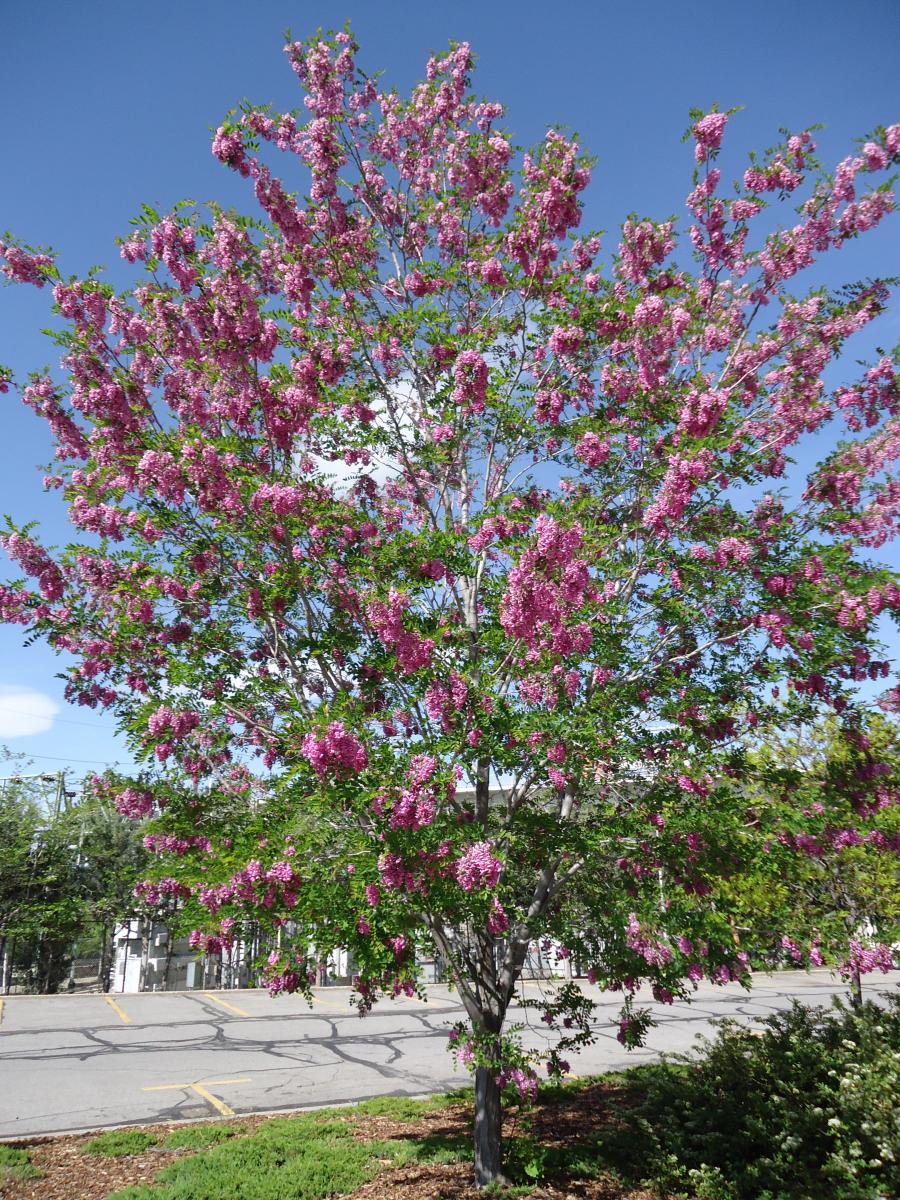
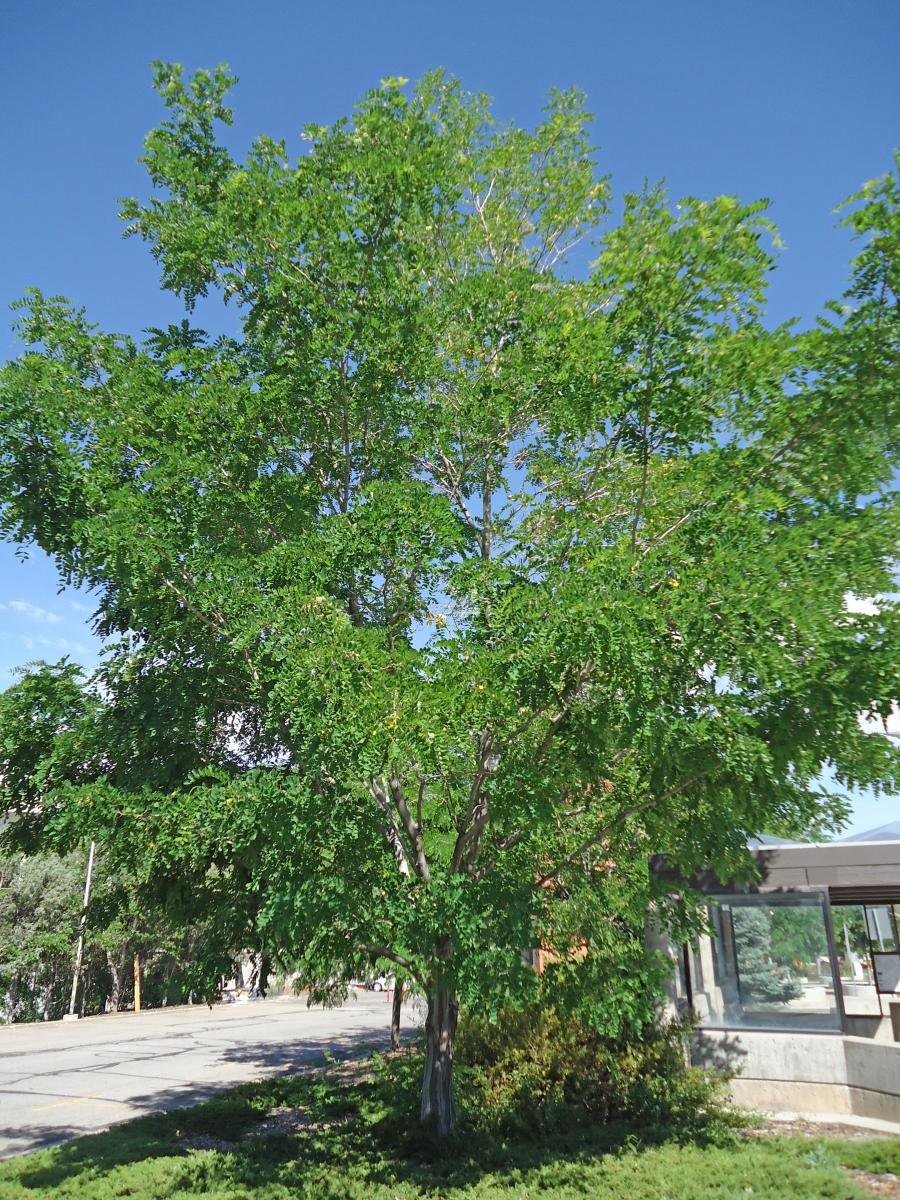
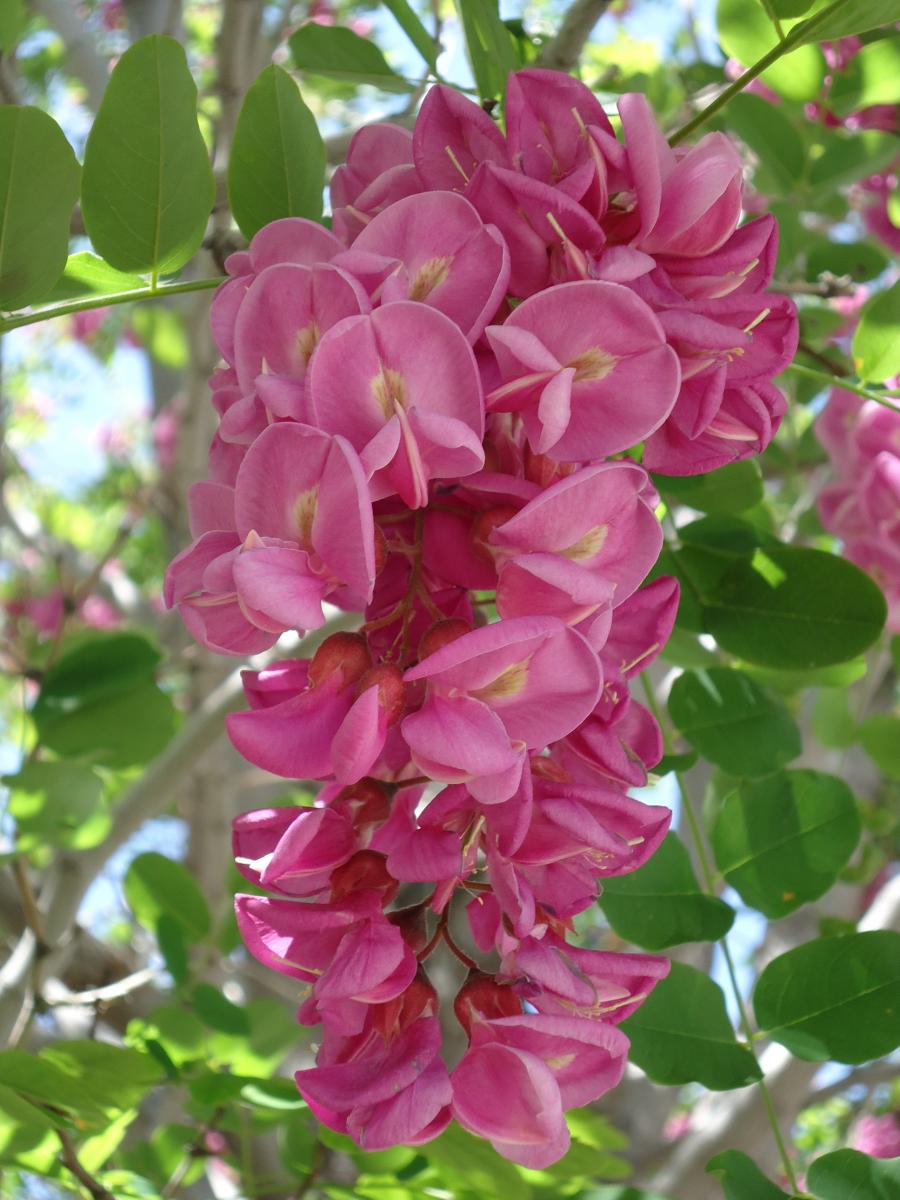

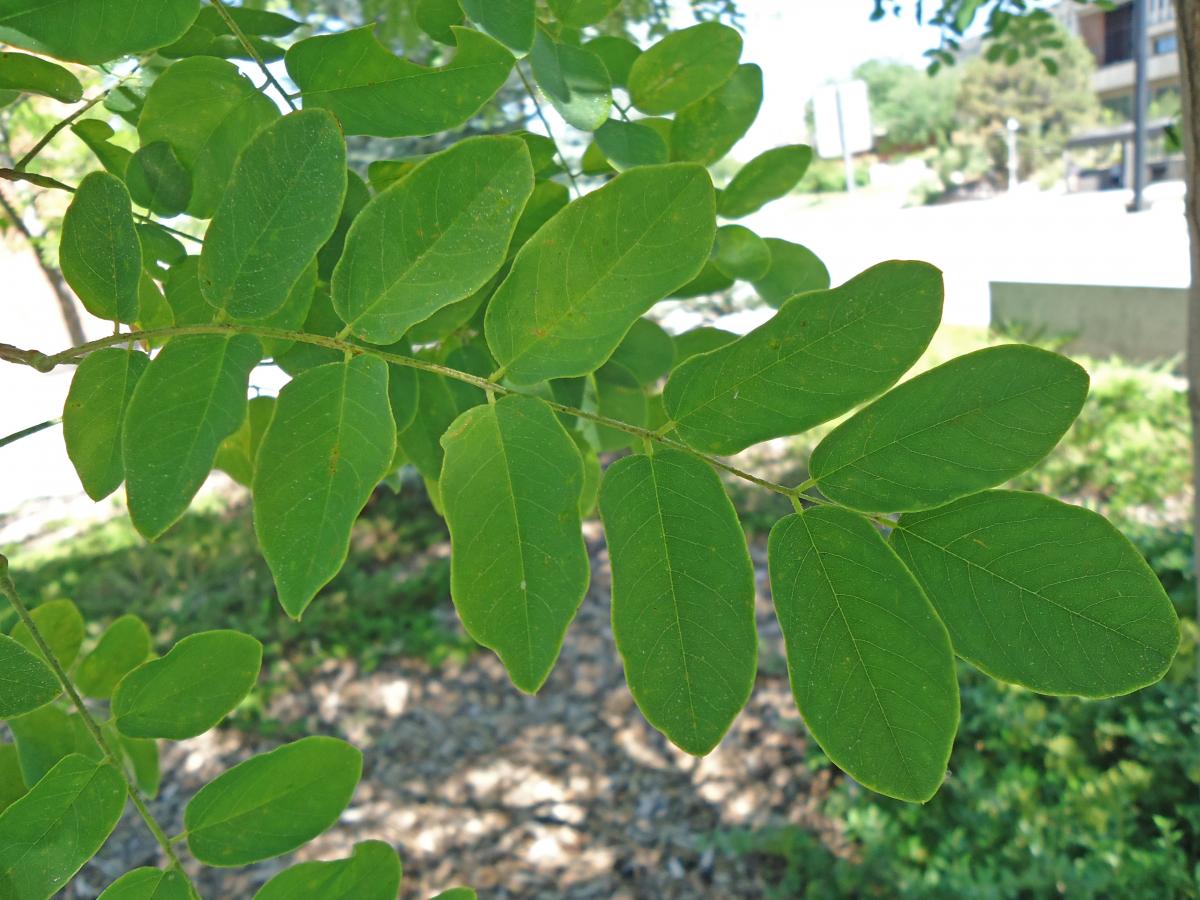
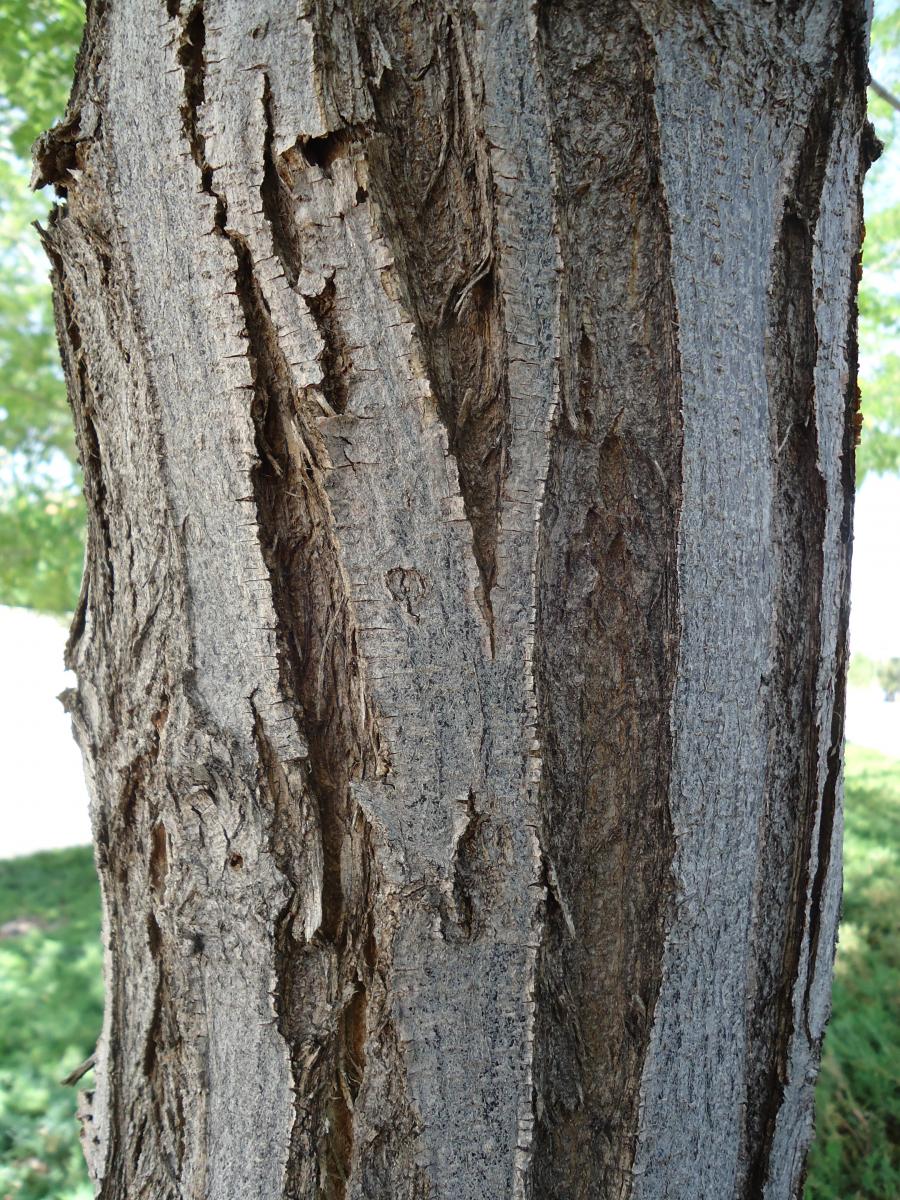
Robinia pseudoacacia 'Purple Robe'
Leaves: Deciduous. Entire leaf is 6 to 14 inches long. Leaves are divided into 7 to 19 leaflets, 1 to 2 inches long and are arranged in pairs. Leaflets are oval or elliptic in shape with a smooth leaf edge. Dull medium green to dark bluish-green color. Fall color is yellow-green.
Bark/Twigs: Gray-black to almost black colored bark. Deeply furrowed into rounded, interlacing, fibrous ridges. Although it is advertised as thornless, branches can have short, stiff spines ¼ to ½ inch long.
Flowers/Fruit: Extremely fragrant, pea-like flowers are pink, sometimes white, and 1 inch across. Flowers grow in 4 to 8 inch long, hanging clusters and bloom in late spring (May to early June). Flat hanging pods are 2 to 4 inches long and contain 4 to 8 seeds. Pods start out green with purple-brown blotches and dry to a light brown.
Mature size and shape: Medium to large. 30 to 50 feet high x 20 to 35 feet wide. Upright and rather irregular shape. Relatively oval overall. Upright tree with a straight trunk and a narrow oblong crown, becoming ragged and scraggly with age.
General information/special features: Plant in full sun. Grows in practically any soil. Does not tolerate constantly wet soils. Drought and salt tolerant. Has the ability to fix-nitrogen, so can survive in depleted or sandy soils. The wood of black locust is exceptionally dense and resistant to decay. Settlers planted it for long lasting fence post wood and used it in shipbuilding for nails.
Landscape use and maintenance: Shade tree. Good for difficult sites, but not highly recommended for the home landscape because of its invasive nature, thorns, and weak wood. A tough tree that can be used in areas where other trees will not grow. Fast growing rate. High maintenance. Can spread quickly by seed or by shoots from roots (sucker sprouts). Susceptible to borers. Transplants very easily. Prune in late summer or fall. If pruned in the spring it will "bleed."
USDA Hardiness Zone: 5 to 8
Family/Origin: Fabaceae – Legume. Native to the central-eastern U.S.
Campus Use: Somewhat common. Can be found along South Campus Drive at the Behavioral Science bus stop and the traffic circle.
